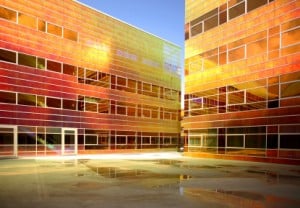 Over the last four years of the commercial real estate recession, most tenants’ leases in San Diego County have expired. When faced with that event, there has been a tremendous migration of tenants in all office submarkets moving from Class B buildings to Class A buildings. Tenants that signed leases for Class B space in 2003-2006, signed as the market was inflating, and had subsequent expirations in the most favorable tenant market in 15 years from 2008-2011. As rents collapsed from 2008-2011, those same Class B tenants could get better space, in a better submarket, for less money than they were paying for their existing inferior Class B space. For example, in 2007, a tenant in UTC would have paid $3.50 “full service gross” for the best Class A office space, and in Del Mar Heights $4.20 “net of electricity.” Those prices have collapsed $1-$1.50 per square foot per month. As a result, tenants that had expiring leases from 2008-2011 were able to move from lower quality Class B buildings to Class A for the same or less money than they were previously paying for lesser quality. Similarly, tenants have been able to migrate from second tier markets like Sorrento Mesa, Kearny Mesa and Mission Valley to the premium markets of UTC and Del Mar Heights for the same rents they were paying for second tier submarkets.
Over the last four years of the commercial real estate recession, most tenants’ leases in San Diego County have expired. When faced with that event, there has been a tremendous migration of tenants in all office submarkets moving from Class B buildings to Class A buildings. Tenants that signed leases for Class B space in 2003-2006, signed as the market was inflating, and had subsequent expirations in the most favorable tenant market in 15 years from 2008-2011. As rents collapsed from 2008-2011, those same Class B tenants could get better space, in a better submarket, for less money than they were paying for their existing inferior Class B space. For example, in 2007, a tenant in UTC would have paid $3.50 “full service gross” for the best Class A office space, and in Del Mar Heights $4.20 “net of electricity.” Those prices have collapsed $1-$1.50 per square foot per month. As a result, tenants that had expiring leases from 2008-2011 were able to move from lower quality Class B buildings to Class A for the same or less money than they were previously paying for lesser quality. Similarly, tenants have been able to migrate from second tier markets like Sorrento Mesa, Kearny Mesa and Mission Valley to the premium markets of UTC and Del Mar Heights for the same rents they were paying for second tier submarkets.
The following chart shows the great disparity in the major office submarkets between Class A and Class B availability, whereby Class A office availability is much less today, due to the migration of tenants from Class B to Class A over the last three years.

Now in 2012, as the market has begun to firm, we are seeing Class A landlords try to move the pricing pendulum in their direction. The reduced availability in Class A office space has caused landlords to reevaluate their economic goals for 2012. Already, major landlords like The Irvine Company have raised rent expectations in UTC by 10 percent. However, I have learned over my 23-year San Diego commercial real estate career that San Diego companies are incredible frugal. Most San Diego companies’ ownership is privately held by people who live and work here in San Diego. As a result, a 10 percent increase in rent comes right out of the business owner’s pocket. Likewise, there are few Fortune 500 companies headquartered in San Diego County whereby such companies might have the liberty to be opulent with their rent dollars. Most San Diego companies, even if they are public companies, run very lean when it comes to rent dollars. This is particularly true of the venture capital-backed business community, represented by so many San Diego companies, where the investors look for low cost and value when it comes to rent expense.
Landlords need to take caution thinking that San Diego County companies are just going to pay up. Taking Sorrento Mesa as an example, some recent leases have been signed in the $2.60 net of electricity range. In that same Sorrento Mesa market, a tenant can get a very clean, attractive and professional Class B office space from a $1.50 to $1.85 net of electricity, where there is still significant softness in Class B space. We can expect tenants that have leases expiring in the next two years to migrate back to Class B space, and back to secondary submarkets where value can be had. While San Diego landlords will certainly look to push rent up as availability continues to decline, landlords have to be cautious not to get ahead of the recovery, whereby tenants will simply flood back to value.
David Marino is senior executive vice president of Hughes Marino, a global corporate real estate advisory firm that specializes in representing tenants and buyers. Contact David at 1-844-662-6635 or david@hughesmarino.com to learn more.







